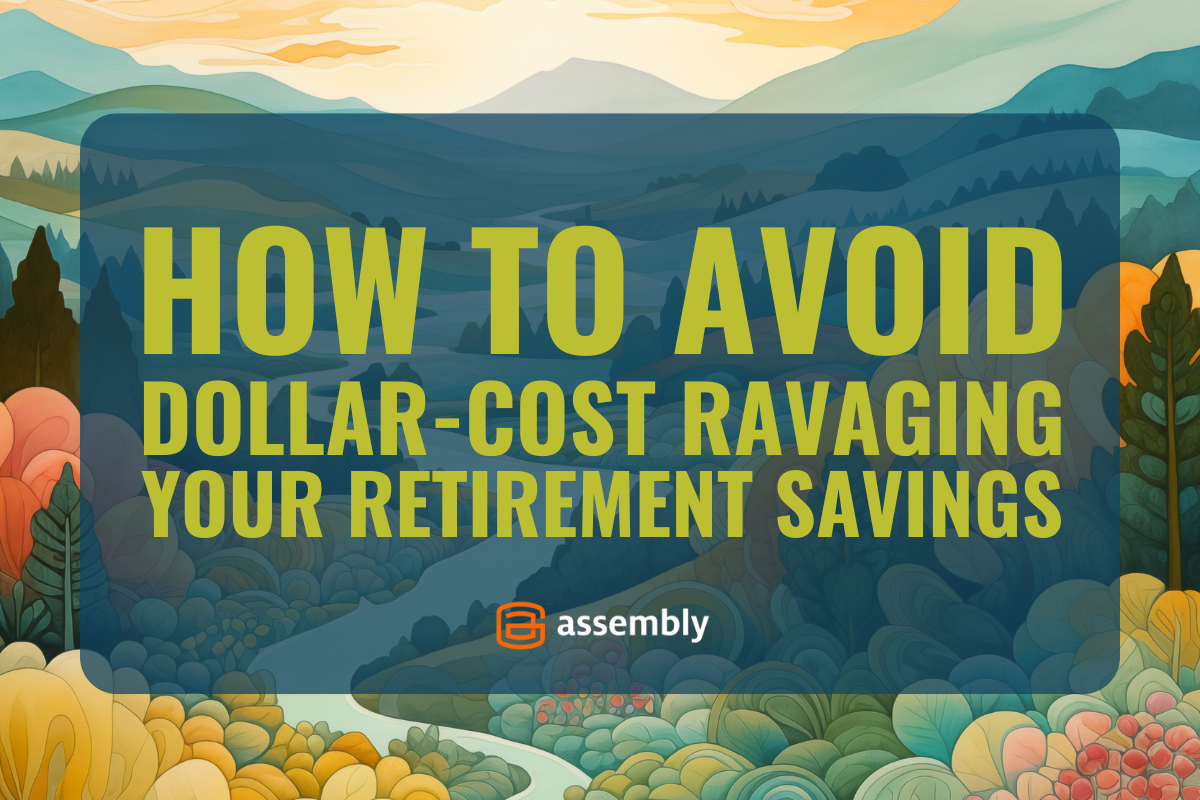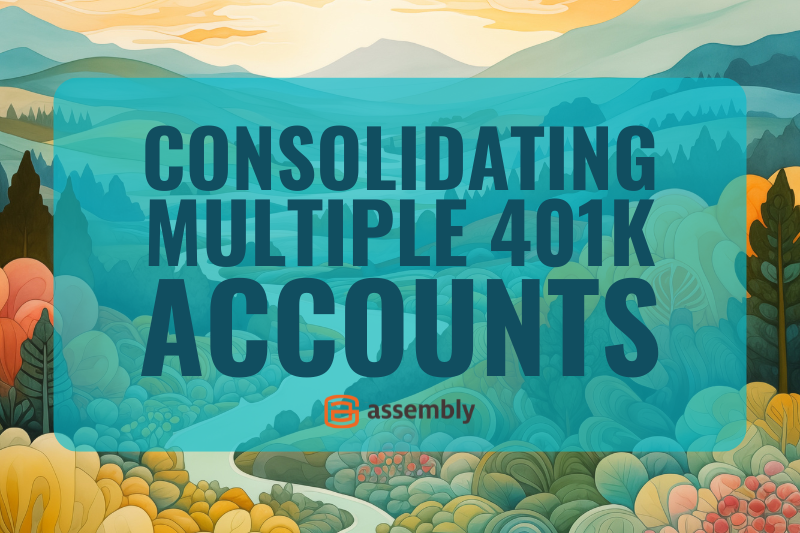How to Avoid Dollar-Cost Ravaging Your Retirement Savings
It may look like a typo, but dollar-cost ravaging is a real thing — and a serious problem for some retirees. As you may have guessed, the name is a...

When I was a kid, it annoyed me when relatives I only saw during the holidays would exclaim, “Look at how much you’ve grown!”
Now that I’m an adult, I understand. It’s amazing how much kids can grow and change in just a year. But when you’re the one doing the growing, it’s hard to see.
Retirement savings works the same way, growing little by little until it’s a full-fledged nest egg. For example, investing $200 per month for 40 years can generate a $500,000+ retirement savings* — even though the total amount set aside is only $96,000. But it only works if you start early.
Many people make the mistake of waiting to start a retirement savings account:
…until I get married or move in with someone
…until I make X amount of money
…until I’m 35
Let’s be clear: the best time to start is now. It’s hard, I know. Setting money aside for Future You when Current You has rent to pay, student loan debt and a wishlist of adventures…can feel challenging. But even a small amount can grow very large over time thanks to compound interest.
Imagine a snowball rolling downhill, growing larger and faster over time. Now imagine that ball is made of money.
When you invest money, it earns interest. If you reinvest that interest, your money can now earn more interest — creating a snowball effect. When you start investing early, your savings can build up momentum and grow faster every year because of compounding.
As the chart below illustrates, how much you save isn’t as important as how long you save.
What a difference 10 years makes! The power of compound interest can turn a small investment into a big one over time.
* (based on an average 7%* annualized return). The S&P’s average, annualized return has been 7.58% since 1971 and 7.9% in the past 30 years. Past performance does not guarantee future results.
Don’t let decision paralysis prevent you from starting your retirement savings.
If your employer offers a retirement plan with a company match, sign up! It’s free money. If you’re not sure which fund(s) to choose, a mutual fund that tracks the MSCI All Country World Index, S&P 500, Russell 1000 or another well-diversified index fund may be a good choice. Index funds include a diverse basket of stocks from different industries and, though the market will go up and down, funds with a variety of stocks typically offer a smoother ride.
People who don’t have access to an employer-sponsored retirement plan can open an IRA or Roth IRA. Generally speaking, a Roth IRA is better if you’re in a low tax bracket. Also, you can withdraw money from a Roth penalty-free for a first-time home purchase, educational expenses, or other reasons. Consult a financial advisor to determine if you are eligible to contribute directly to a Roth.
If you want to reduce your taxable income, a traditional IRA is the way to go. You can contribute to an IRA even if you participate in an employer-sponsored plan, such as a 401(k) or 403(b). Consult a financial advisor to ensure you don’t exceed IRS contribution limits.
No one likes paying bills — even when the person you’re paying is you! With automatic deductions, a fixed amount goes directly from your bank account or paycheck into your retirement savings every month. Automatic deductions help you stay disciplined by removing the temptation to spend the money on something else.
Automatic deductions also increase the odds you’ll keep saving. Research conducted by AARP found people were 20 times more likely to contribute to a retirement plan if they signed up for automatic deductions.
The amount you put away every month could be as little as $25 (but we encourage you to save more). If a small amount doesn’t seem worthwhile, take another look at the first chart. Remember, when you’re in your 20s, how much you put away isn’t as important as staying invested for a long time. To estimate how much your savings can grow over time, use this compound interest calculator.
When you start earning more money, increase your retirement savings proportionally. For example, if you’re currently investing $100 per month and get a 5% pay raise, increase your monthly contribution to $105 (or more if you can afford it).
If you have kids or relatives who need care (or both) be sure to take advantage of other financial savings plans such as:
There’s a lot of information online about, “How much you should have in your retirement savings by XYX age.” But the truth is, everyone’s situation is different.
Assembly Wealth offers personalized financial strategies aligned with your unique goals, passions and dreams. We’re happy to answer any questions you may have about this article or other financial planning questions. Connect with us online and let us know how we can help.
Related Reading:
Fill out the form to be notified about new articles.

It may look like a typo, but dollar-cost ravaging is a real thing — and a serious problem for some retirees. As you may have guessed, the name is a...

Saving for retirement can feel like an uphill battle, even for couples. Planning for retirement solo can feel both liberating and daunting. You get...

As we age, we accumulate things: workout equipment, kitchen gadgets and 401(k) accounts from different jobs. The workout equipment and gadgets may be...